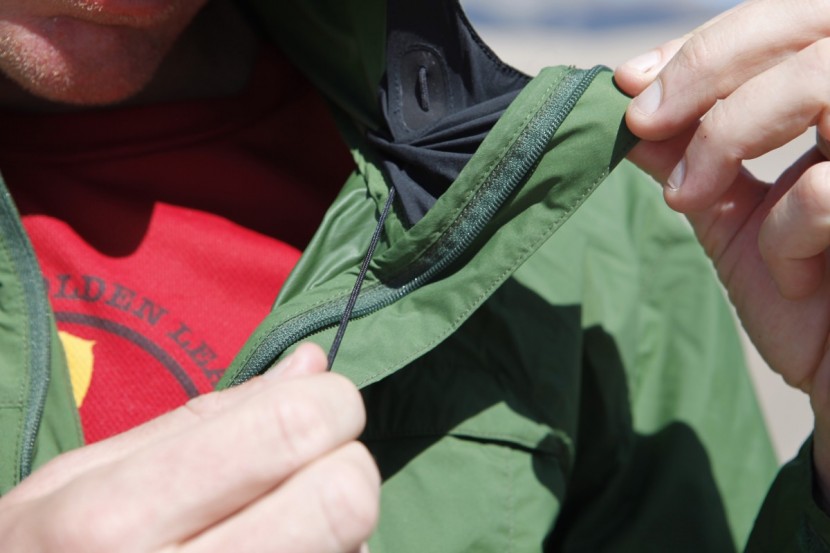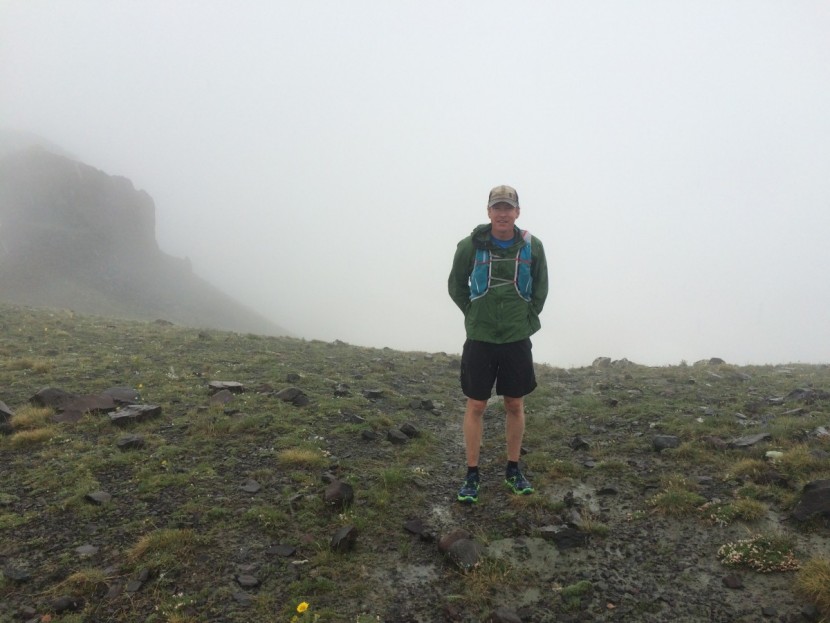Sierra Designs Exhale Windshell Review
Our Verdict
Our Analysis and Test Results
The best quality of the Exhale Windshell is the breathability of its stretch fabric. Much like the Outdoor Research Tantrum II or the Arc'teryx Squamish Hoody, the stretch nylon material is quite air permeable, meaning that moisture has the ability to flow through from the inside to the outside. It also has real jacket features found on some of our favorite hardshells, like dual hood draw cords on the side of the neck, and adjustable Velcro wrist enclosures, not to mention real hand pockets.
However, this jacket scores poorly in our review because it doesn't hold up to the elements. We found it lacking in water resistance, despite claims to the contrary, and we also found the hem to be too high and the arms to be very short in our size large. Its highly breathable nature seemed to allow wind to penetrate easier than other jackets. The end result is that we don't hate this jacket, but the numbers speak for themselves. It was the lowest scorer in the review.
Wind Resistance
We gave the Exhale Windshell a rating of five out of 10 points for wind resistance, tied for the lowest in the review. We came up with this assessment after plenty of field testing, including one 22-mile training run through the wilderness in some terrible weather, and while testing during a ridgetop windstorm where we wore jackets side-by-side. It scored similarly to other highly breathable stretch fabrics, like the OR Tantrum and the Arc'teryx Squamish Hoody. It is worth pointing out that this score is in comparison to other wind breakers, and doesn't actually mean that it has no ability to block the wind, which it does.
Breathability and Venting
Like the other jackets mentioned above, the lightweight stretch nylon on this jacket does a good job of breathing by allowing air to pass through. That said, we found the Polyurethane (PU) laminate applied to the inside of the shoulders and the hood certainly does prevent air transfer, and traps moisture on the inside of the jacket in a place (the top) where it most needs to breathe. We also liked how the pockets are large and mesh lined, including the chest pocket, allowing for increased venting capabilities. Overall we gave eight out of 10 points for breathability.
Fit and Functionality
We really had issues with the fit of our size large jacket. In general, the jacket was very small. In particular, the sleeves were much too short for our arms, something that drives us nuts, and allows exposure to the elements. We also thought the hem line was too high, and it had a habit of riding up above our waist. Lastly, the fit in the back of the shoulders was too tight. The fit in the torso area was just big enough to layer underneath, but we certainly wish this jacket was bigger.
That said, we did appreciate the attention to detail with many of the features. We loved the adjustable Velcro wrist enclosures that are nicer than simple elastic. The hood fit well and kept our face covered during an epic rainy day run, and we liked that it is adjustable with dual, non-buckle pull cords next to the face. Hand pockets make this seem like a real jacket and not just a technical layer. Overall, five out 10, mostly because the fit was so bad.
Water Resistance
We had issues as well with the water resistance of this jacket. At the end of the test period the DWR coating had worn off of the shoulders, neck, and back. With a quick dousing in the shower, we had water running down the inside of the jacket, even inside the shoulders and hood, despite the added “water proofing” in those areas. It wasn't the worst in the test by a long shot, though. Five out of 10 points.
Weight and Packability
Our size large jacket weighed in at 8.3 ounces, a fair bit heavier than the advertised weight. This made it the third heaviest jacket, behind only the two jackets with insulated layers. For this reason we awarded it four out of 10 points. However, we also chose to deduct two points for the fact that it was the only layer in our test that didn't stuff into one of its own pockets for easier portability and versatility. This is just one of the reasons we suspect it wasn't designed with technical functionality in mind. It was also bulky. The end result was twoout of 10 points for weight and packability.
Best Applications
We sincerely believe that the best use for this jacket is simply as a light shell for around town. Our experiences in the field and in comparative testing convinced us that this is its true purpose, and it just doesn't stack up to the competition for technical outdoor use.
Value
This jacket retails for a price of $125. Like we have already said, if you are looking for a performance wind breaker, look elsewhere, regardless of the price. With our own money, we wouldn't consider buying this jacket.
Conclusion
The Exhale Windshell by Sierra Designs was the lowest scoring wind breaker in our review. While it wasn't a terrible jacket by any means, we have a hard time recommending it. Even for city users who want some protection from the wind and rain, we would have to point you toward our our favorite rain jackets, where you can find a comparably priced jacket that will keep you a lot dryer in wet climates.














